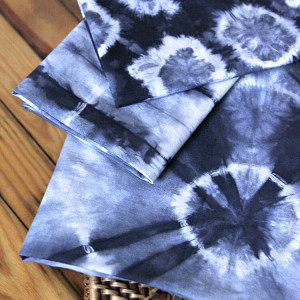
The textile industry has evolved significantly over the past many years becoming today an important contributor towards the economies of many developing countries. Textile dyes though a small part is a significant segment of this industry and with the boom in textiles, the business of textile dyes has also increased by leaps and bounds. Today, India takes the lead position world-wide in the manufacture of reactive dyes.
Environmental protection and water conservation have become two main factors of concern in the textile industry. A lot of money is spent on research to develop dyes and processes that adhere to the voluntary, legal, retailer and brand restricted substance list requirements. This has raised the bar of quality for dyes that shall be used in the textile manufacture process. There is an emphasis to obtain dyes with new chemical structures that will be devoid of heavy metals and halogens and adhere to the global standards that outline good quality vat dyes, basic dyes and others used in the textile industry. Advanced technologies are being adopted to produce chemicals and dyes used in the textile industry. Nano-technology is one of them with nano-ecological dyeing becoming an important part of it. Dyeing processes have changed to become more automated and eco—friendly.
With lots of water being consumed in the dyeing process and the difficulty of treating the waste water released after the end of the process, manufacturers are making a switch to processes that use lesser amounts of water. One of the steps in this direction is the use of liquefied carbon dioxide in place of water. This technique called the supercritical CO2 dyeing requires strongly lesser water and energy, discharges no effluents, has a lesser dyeing time and is considered as one of the sustainable dyeing process. The carbon dioxide is comparatively non-toxic than the other dyeing methods and has the advantage of being recycled to a large extent. Because of its high green credentials this technique is increasingly used by leading brands for a large portion of their product range.
Another concept that substitutes water is the ‘AirDye’ technology where air is used in place of water for textile dyeing. In this technique water consumption is reduced by 95% and consumption of energy by about 86%. This also causes no discharge of hazardous effluents reducing the environmental impact to a great extent. This technique offers many exciting options in the field of dyeing and printing like dyeing one side of the fabric with a solid colour and printing on the other side or printing both sides of the fabric with different designs and so on.
Another area worth mentioning is the growth of the application technology for digital textile printing. New high performing inks are being introduced to meet the requirements of the new industry standards. A wide range of bright and vivid coloured inks that fulfil high fastness requirements are available today.
In today’s times, businesses need to deliver top quality, reduce costs and retain its competitive position while meeting customer expectations for attractive products that are environmentally friendly. Use of the above mentioned techniques are just a few steps in this direction.